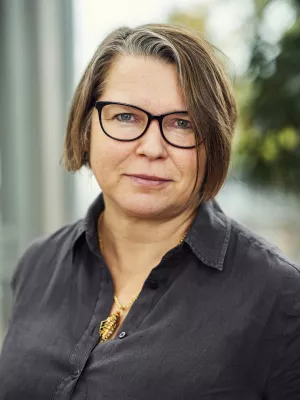
Katja Lindqvist
Senior lecturer, associate professor

What role for culture in city development? : Municipal strategies in Elsinore and Helsingborg
Author
Summary, in English
Some researchers, however, have claimed that creative city policies are seldom well supported by previous research (Trip and Romein 2013). Researchers have also shown that creative city polices are justified with reference to welfare as well as growth arguments (Pike et al. 2006; Grodach and Loukaitou-Sideris 2007), and that this complexity makes it difficult to clearly place creative city policies on a traditional left-right scale. This is because creative city policies demand integrated approaches Navarro and Clark (2012). It is the issue of integrated approaches to creative city policy that is of particular interest in this paper, in particular how cultural policy relates to city development.
Based on research on new urban politics and creative city policies, this paper will explore differences and similarities in the use of culture for urban development in the cities of Elsinore and Helsingborg. The paper specifically answers the questions of how the local administration of urban (city) development is related to cultural policy and the cultural and creative sides of urban life and experiences. What role does the organisation of municipal administration have for the relationship between municipal cultural institutions and city development policy? Why has the current relationship between culture and urban development in the two cities emerged?
The paper is based on interviews and public municipal documents regarding municipal administration of Elsinore and Helsingborg respectively. The study shows a vertical and functionally separated municipal administration in Helsingborg, whereas Elsinore has a horisontally and functionally integrated municipal administration, both in the area of culture and urban development, and in other sectors. In addition, the study shows that culture is more important for city development in a city where traditional economic models for urban development has limited relevance. The paper also highlights the fact that in Danish urban development policy, different kinds of stakeholder groups are perceived as more directly involved in policy processes and city development than in Sweden. Differences in the economic development and political culture between the cities and countries are proposed as explanations for the identified differences in the relationship between city development policy and cultural policy in municipal government and administration in the two cities.
The paper contributes to more profound knowledge of the rather differing strategies chosen in two Nordic countries, seemingly similar in their welfare approach to culture as vital for good quality of life, by two cities with visions for becoming a unified urban area in 2035, yet with rather striking differences in their cultural profiles as well as urban development policies. The results serve as examples of benefits and drawbacks of different city development policies, but also points to the impact of location and economic history as well as political culture of a country and individual city. Although located in regions with strong development policies, the paper focuses on municipal strategies, as regional development policies are not focused on the specific development of individual cities.
The paper offers examples of different approaches to structure the relationship between culture and creative forms of expression and development policies of a city. For example, it identifies different approaches to development of culture and creativity in a city, and discusses the differences between culture seen from the view of urban development and a welfare perspective, as visible in both Danish and Swedish cultural policies since the 1970s.
References
Eckardt, Franck 2005: “Governance of culture in European cities”. In: Robinson, Jill (Ed.) EUROCULT21 Integrated Report. Available at http://www.eukn.org/E_library/Economy_Knowledge_Employment/Urban_Econom…
Garcia, Beatriz 2004: “Cultural Policy and Urban Regeneration in Western European Cities: Lessons from Experience, Prospects for the Future”. Local Economy 19(4): 312-26.
Grodach, Carl 2013: “Cultural Economy Planning in Creative Cities: Discourse and Practice”. International Journal of Urban and Regional Research 37(5), 1747-65.
Grodach, Carl & Loukaitou-Sideris, Anastasia 2007: “Cultural development strategies and urban revitalization”. International Journal of Cultural Policy, 13(4), 349-70.
Kovacs, Jason 2011: “Cultural planning in Ontario, Canada: arts policy or more?”. International Journal of Cultural Policy 17(3), 321-340.
Markusen, Ann & Gadwa, Anne 2010: “Arts and culture in urban or regional planning: A review and research agenda”. Journal of Planning Education and Research 29(3), 379-391.
Montgomery, John 2003: “Cultural Quarters as Mechanisms for Urban Regeneration. Part 1: Conceptualising Cultural Quarters”. Planning Practice & Research 18(4), 293-306.
Navarro, Clemente & Clark, Terry 2012: “Cultural policy in European cities: An analysis from the cultural agenda of mayors”. European Societies 14(5), 636-659.
Pike, Andy, Rodríguez-Pose, Andrés, & Tomaney, John 2006: Local and Regional Development. Abingdon: Routledge.
Scott, Allen John 2014: “Beyond the Creative City: Cognitive–Cultural Capitalism and the New Urbanism”. Regional Studies, 48(4), 565-78.
Trip, Jan Jacob & Romein, Arie 2014: “Creative City Policy and the Gap with Theory”. European Planning Studies, 22(12), 2490-2509.
Department/s
- Department of Service Studies
Publishing year
2016
Language
English
Links
Document type
Conference paper
Topic
- Business Administration
Keywords
- stadsutveckling
- kultur
- kulturpolitik
- kommunal förvaltning
- regional utveckling
- Helsingborg
- Helsingör
- urban development
- creative city
- culture
- local government
- public management
- Elsinore
- Helsingborg
Conference name
Valuing and Evaluating Creativity for sustainable Regional Development
Conference date
2016-09-11 - 2016-09-14
Conference place
Östersund, Sweden
Status
Unpublished

